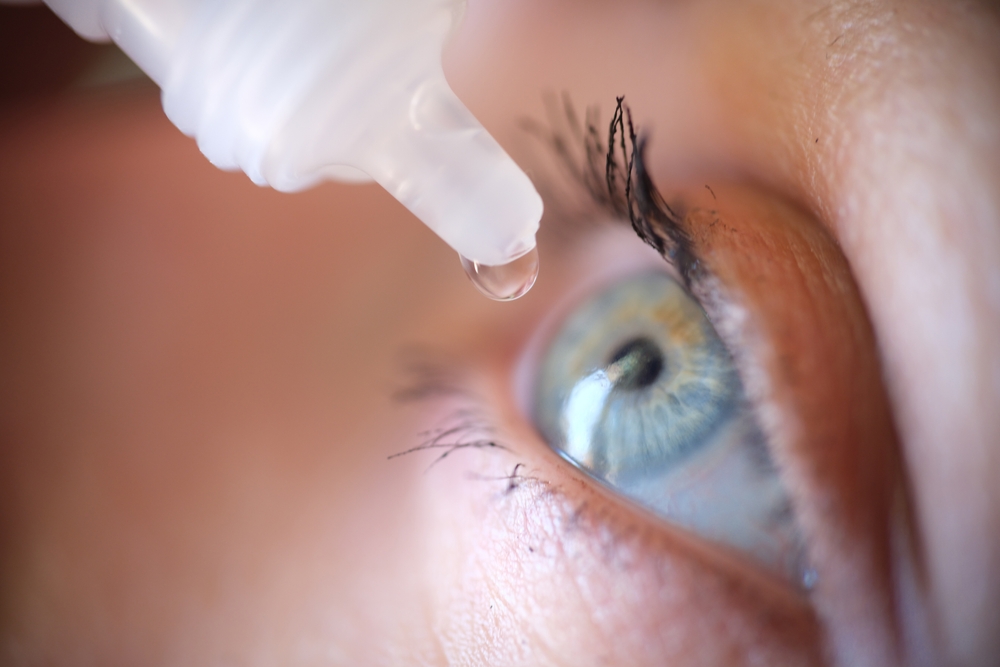
Dry eye is a common and often chronic condition that affects millions of people worldwide. It occurs when your eyes don't produce enough tears or when the tears evaporate too quickly. This can lead to a range of unpleasant symptoms, including irritation, redness, and a feeling of grittiness or discomfort in your eyes.
Understanding the Causes of Dry Eye
Dry eye can be caused by a variety of factors, and it's important to identify the underlying cause in order to develop an effective treatment plan. Some of the most common causes of dry eye include:
Meibomian Gland Dysfunction (MGD): This is a leading cause of dry eye, where the meibomian glands in your eyelids become blocked or dysfunctional, resulting in an inadequate production of the oil that helps to stabilize the tear film.
Blepharitis: This is a condition characterized by inflammation of the eyelids, which can also contribute to the development of dry eye.
Aging: As we get older, our tear production naturally decreases, making us more susceptible to dry eye.
Certain medications: Some prescription and over-the-counter medications, such as antihistamines, antidepressants, and blood pressure medications, can also lead to dry eye.
Environmental factors: Factors like dry air, wind, and prolonged screen time can all exacerbate dry eye symptoms.
Underlying health conditions: Conditions like Sjögren's syndrome, rheumatoid arthritis, and diabetes can also contribute to the development of dry eye.
Understanding the root cause of your dry eye is crucial for developing an effective treatment plan. By working with your optometrist, you can identify the underlying factors and create a personalized approach to managing your condition.
Recognizing the Symptoms of Dry Eye
Dry eye can manifest in a variety of ways, and it's important to be aware of the common symptoms so that you can seek appropriate treatment. Some of the most common symptoms of dry eye include:
Redness and irritation in the eyes
Feelings of grittiness, burning, or stinging
Sensitivity to light or wind
Blurred or fluctuating vision
Excessive tearing or watery eyes
Difficulty wearing contact lenses
Fatigue or discomfort after prolonged screen time or reading
If you're experiencing any of these symptoms, it's important to seek the guidance of an optometrist to get a proper diagnosis and develop a personalized treatment plan.
The Importance of Seeing an Optometrist for a Proper Diagnosis
Diagnosing the underlying cause of dry eye is crucial for developing an effective treatment plan. While you may be able to identify some of the symptoms on your own, a comprehensive eye exam by an optometrist is necessary to determine the root cause of your dry eye. During the exam, your optometrist will:
Evaluate your tear production: They may use specialized tests, such as the Schirmer test, to measure the quantity and quality of your tear production.
Assess the health of your eyelids and meibomian glands: They will examine the structure and function of your eyelids and meibomian glands to identify any underlying issues, such as MGD or blepharitis.
Examine the tear film: Your optometrist may use specialized imaging techniques, such as tear film analysis, to evaluate the stability and composition of your tear film.
Consider any underlying health conditions: They will ask about your medical history and any medications you're taking, as these can contribute to the development of dry eye.
By working with an experienced optometrist, you can ensure that the underlying cause of your dry eye is properly identified and that a personalized treatment plan is developed to address your specific needs.
Personalized Treatment Plans for Dry Eye: Exploring Treatment Options
Once your optometrist has identified the underlying cause of your dry eye, they will work with you to develop a personalized treatment plan. The goal of treatment is to address the root cause of your dry eye and provide relief for your symptoms. Some of the most common treatment options for dry eye include:
Lifestyle modifications: Simple changes to your daily routine, such as limiting screen time, using a humidifier, and wearing sunglasses in windy or dry environments, can help alleviate dry eye symptoms.
Artificial tears and lubricating eye drops: Over-the-counter or prescription eye drops can help supplement your natural tear production and provide temporary relief from dry eye symptoms.
Prescription medications: In some cases, your optometrist may prescribe medications, such as anti-inflammatory eye drops or oral medications, to address the underlying causes of your dry eye.
Meibomian gland expression and heating treatments: For cases of MGD, your optometrist may recommend in-office treatments to unclog and stimulate the meibomian glands, such as thermal pulsation therapy or manual expression.
Eyelid hygiene and lid scrubs: Maintaining proper eyelid hygiene, including the use of lid scrubs or eyelid cleansers, can help manage blepharitis and improve the overall health of your tear film.
Dietary supplements: Certain dietary supplements, such as omega-3 fatty acids, may help to improve the quality and quantity of your tear production.
By working closely with your optometrist, you can develop a personalized treatment plan that addresses the specific causes of your dry eye and provides the relief you need.
Taking Control of Your Dry Eye and Finding Relief
Dry eye is a common and often chronic condition, but with the right treatment plan, you can take control of your eye health and find relief from your symptoms. With the right combination of lifestyle changes, medication, and specialized treatments, you can find the relief you need and enjoy a more comfortable and fulfilling quality of life.
If you're struggling with dry eye, schedule an appointment with our experienced optometrist at The Public Spectacle. We can help you identify the underlying cause of your condition and develop a personalized treatment plan to provide you with the relief you need. Visit our office in Brunswick, Maryland, or call (310) 834-6400 to book an appointment today.


